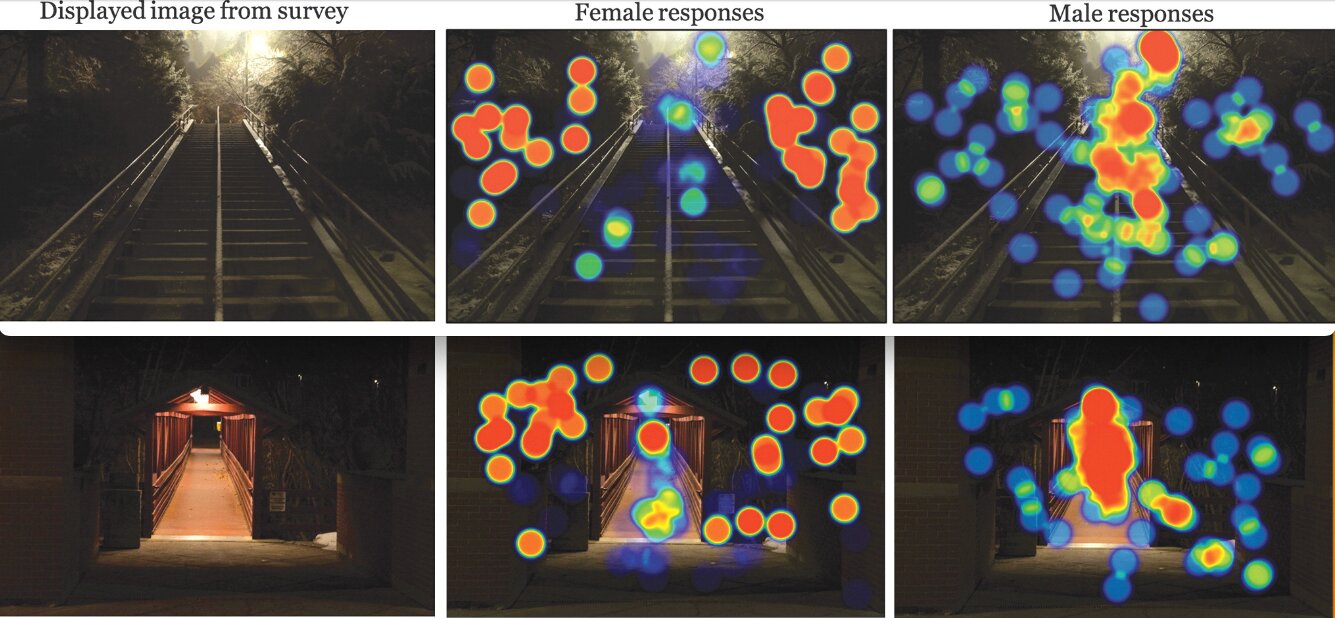An eye-catching new study shows just how different the experience of walking home at night is for women versus men.
The study, led by Brigham Young University public health professor Robbie Chaney, provides clear visual evidence of the constant environmental scanning women conduct as they walk in the dark, a safety consideration the study shows is unique to their experience.



Interesting.
I’m certain there are very real differences between men and women in this regard, but the methodology feels like it reduces the quality of the data.
It would have been nice if the researchers could have used eye tracking to see where people were actually looking, rather than asking them to click on what drew their attention. There’s surely at least some difference between what people are actually doing, versus what they self-report as doing when asked about it.
I felt the same. Or better yet, why don’t they film participants in real life walking outside at night and tracking eyeballs and heartbeats and other metrics.
I thought that too, but being at night and unsociable hours makes it a more difficult study to perform, and also difficult to control the conditions. So I can accept the desire to simulate it in a lab setting.
Perhaps ideal would have been a VR experience of walking in a nighttime location, which could have done the eye tracking (VR headsets can do that) and also would be identical every time.
The methodology also allows lots of people to participate (600 in the study). If they had to actually walk outside then it would almost certainly reduce the number of participants they were able to have.
A VR type thing could be good
While it increases the N of the study, I’d say it severely cripples the quality of those results. Sometimes less is actually more.
I second that. Fear has a lot to do with subconscious and fast reactions without actually thinking about that. Having them point and click basically burns all that spontaneous part of the equation.
Just from looking at the result pictures, one could also derive that women can’t focus on goals ;-)
Yeah there are some great eye movement tracking studies for people watching scenes from films, they should have made this more like that.
Hey you’re that cockroach-milk dude(tte)!
Would also have been great if they included visual stimuli with daylight scenes as controls.
@ohitsbreadley omg cockroach milk, not what I want to be known for lol!
Daylight scenes would be good. I guess given enough funding we would want to control with “safe” environments too eg subject’s own home.
The eye movement/film studies were fascinating because there’s a ton of theory in film (and art/photography) about where the viewer looks and what the eye is drawn to. And of course the movement studies debunked it.